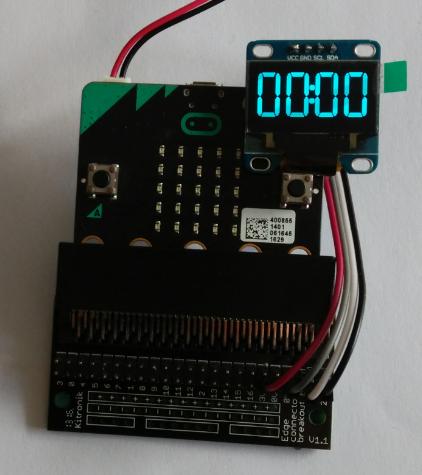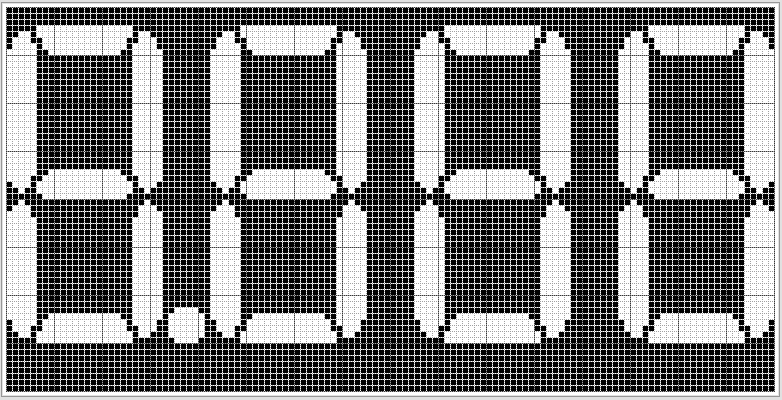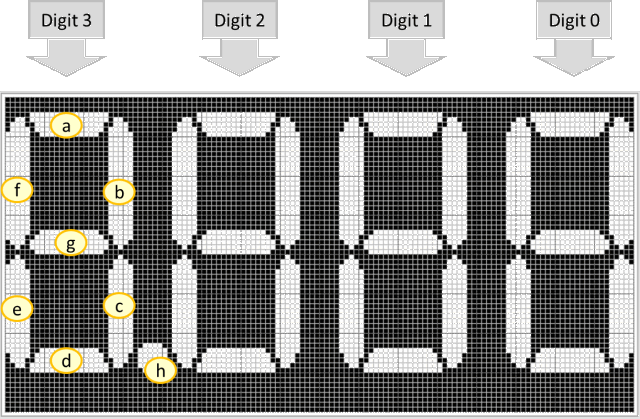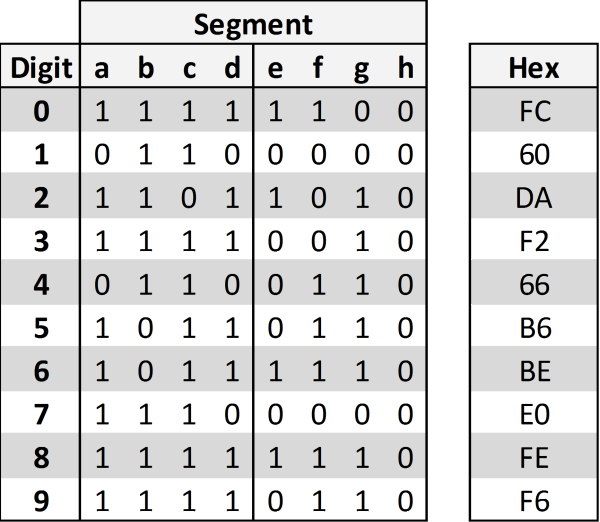This library allows the micro:bit to emulate a 7 segment display with the typical low cost 0,96" OLED display sold in Amazon and eBay connected to the default I2C pins of the micro:bit. Some sort of breakout is required. Note that the Kitronik breakout does not have pre-soldered the I2C pins and you will need to attach some headers to access the I2C pins.
You should connect the device's SCL pin to micro:bit pin 19, and the device's SDA pin to micro:bit pin 20. You also must connect the device's ground to the micro:bit ground (pin GND).
This library uses the full resolution of the display, since it does not use a display buffer. All segments have been designed not to overlap the area of another segment. Number rendering is really fast, since only segments that change are drawn or cleared and the segments have been defined to expand to as few pages as possible.
The library requires a binary definition of the segments to be loaded (segments.bin) together with the ssd1306_7seg.py file. This allows reducing memory consumption at compile time.
Contents
128x64 resolution of the numbers
4 digits
Option to draw two dots to separate the first two digits from the second two digits to display times
Sample program demonstrating the usage

Initializes the OLED display with zeros if showZeros is set to 1 and with two dots separating the first two digits to display times if showDots is set to 1.
from ssd1306_7seg import initialize
initialize(1,1)Displays the number n on the screen, with the decimal point at position numDec, being 0 the right-most position. n should be between 0 and 9999. If numDec=0 no decimal point is displayed. Note that the digit 0 does not support decimal point.
from ssd1306_7seg import initialize, disp_num
initialize(1,1)
disp_num(1306)Displays the digit definition d at position digit. A digit definition is created as the resulting binary number of the combination of required segments to paint the number:
According to the above table, to paint a 1 we have to use the value 0x60 at the desired position. If we want digit 0 to be 1, we would use:
from ssd1306_7seg import initialize, set_digit
initialize(0,0)
set_digit(0,0x60)Can you make the display show HELO? You can find the hexadecimal codes in the excel file of the tools folder. Remember that you can use the REPL for quick tests like this.


